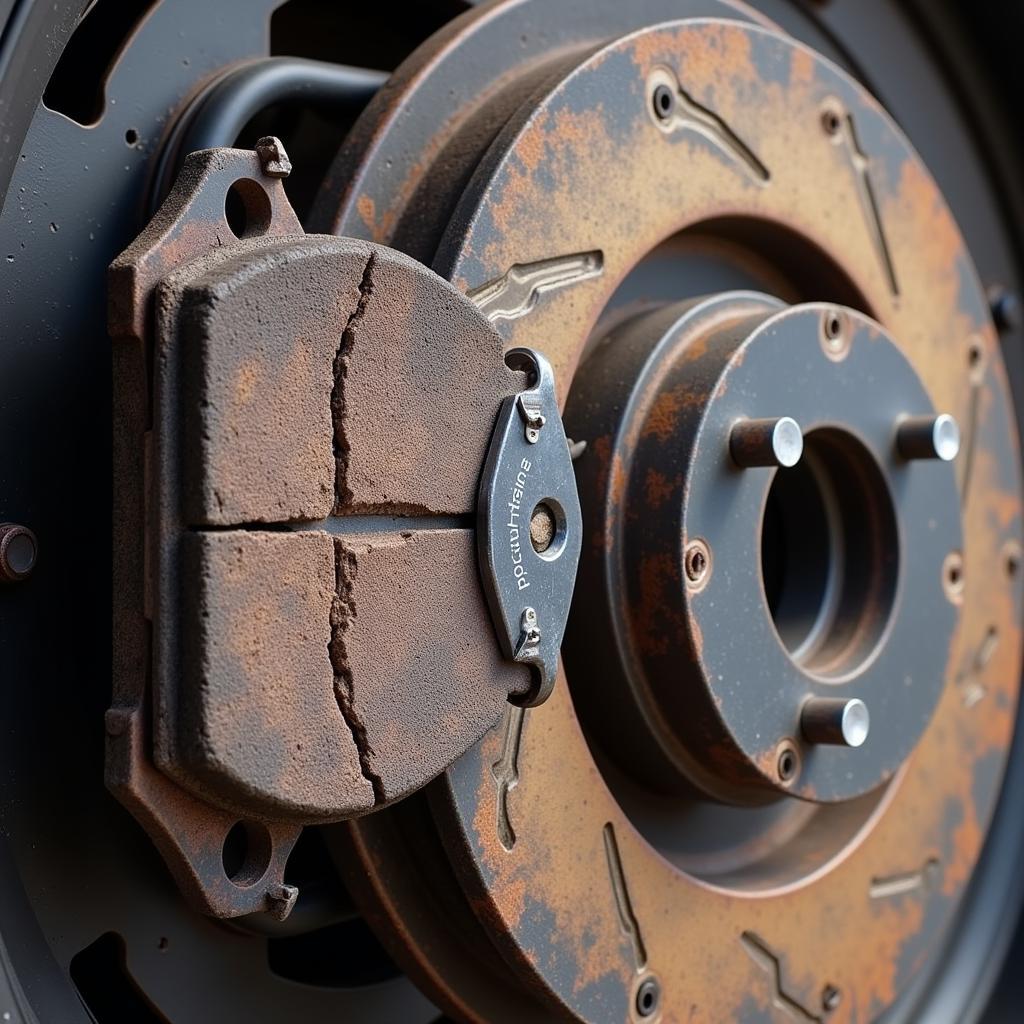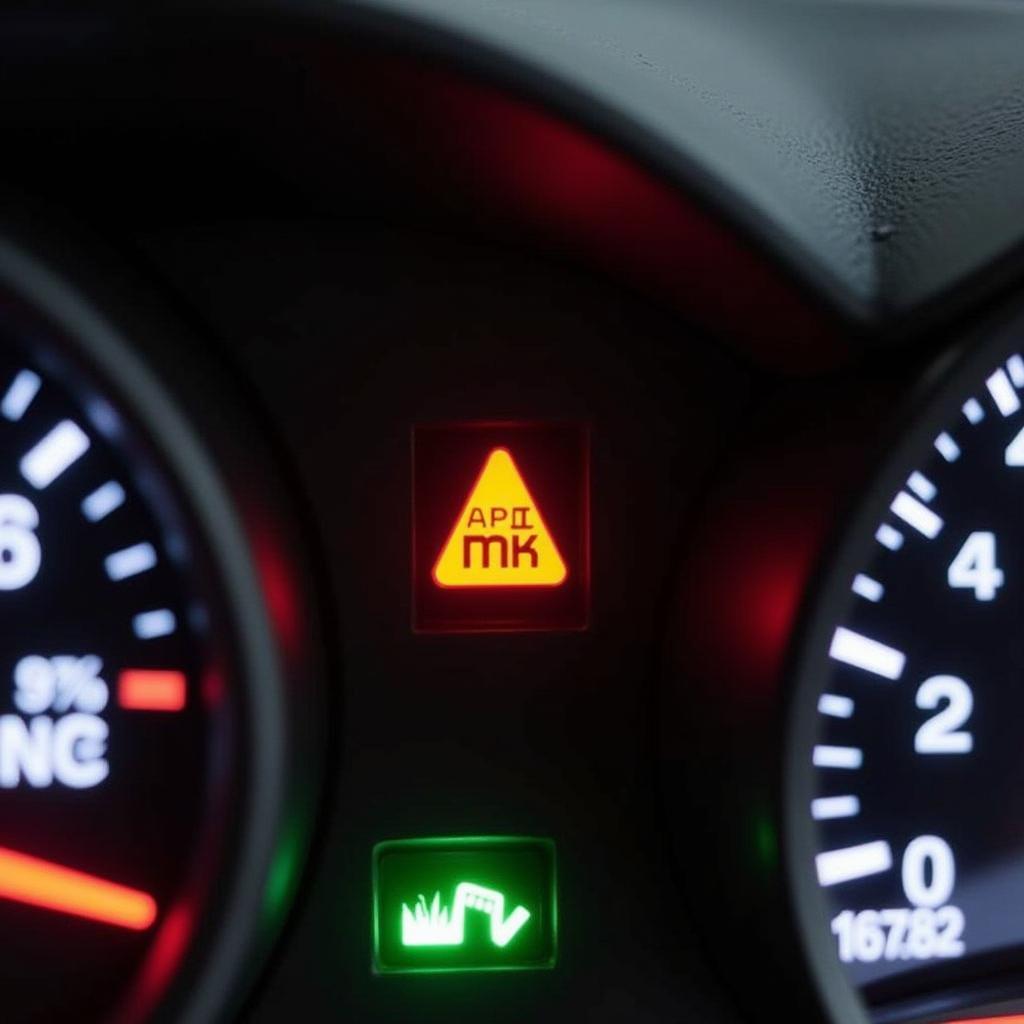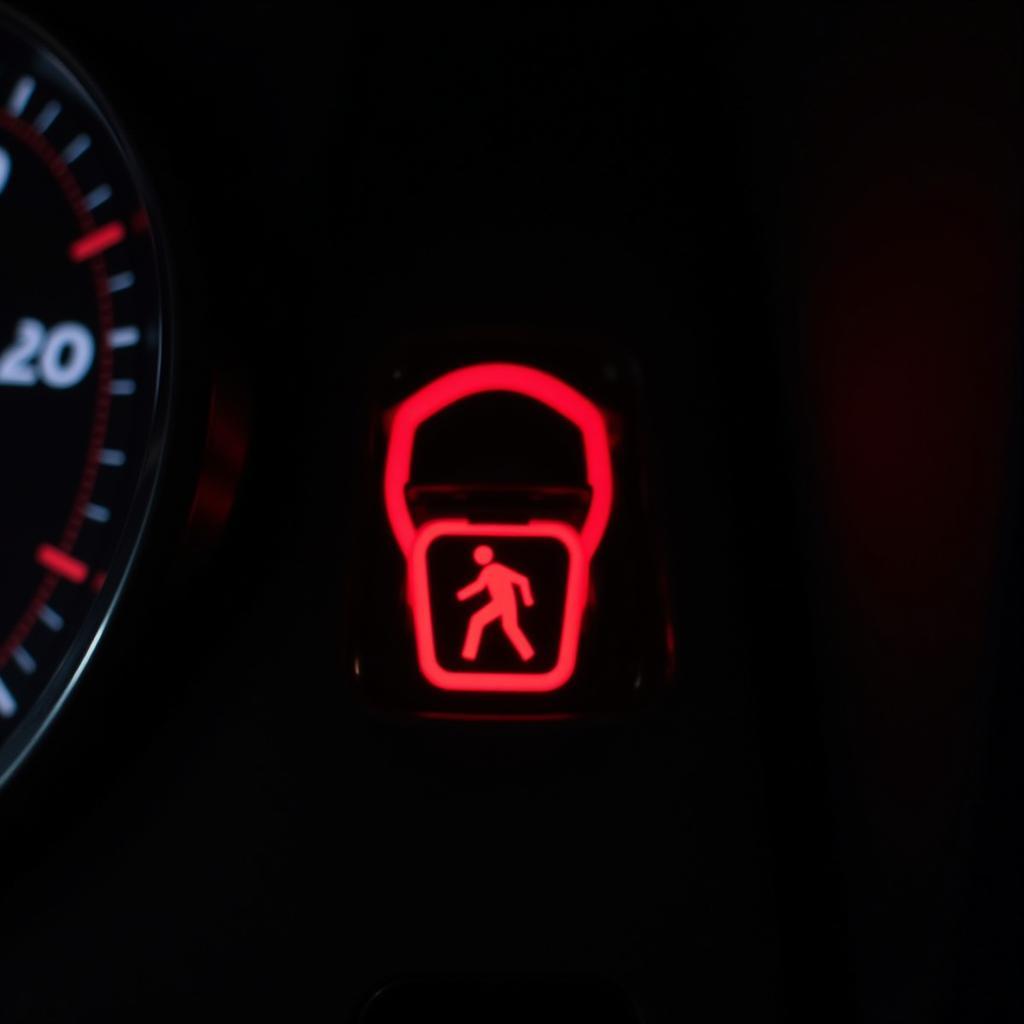A brake pad warning tab is a small metal indicator on your brake pads that lets you know when it’s time for a replacement. As you drive and your brake pads wear down, the tab eventually comes into contact with your brake rotor, creating a high-pitched squealing or screeching sound. This audible warning is a clear sign that your brake pads are nearing the end of their lifespan and require immediate attention.
Understanding the Importance of Brake Pad Warning Tabs
Though often overlooked, brake pad warning tabs play a crucial role in road safety. They provide a timely alert, allowing drivers to address brake pad wear before it escalates into a serious safety hazard. Ignoring these warnings can lead to significantly reduced braking efficiency, potentially causing accidents.
Here’s why brake pad warning tabs are so important:
- Prevent rotor damage: Driving with worn-out brake pads can lead to the metal backing plate scraping against the brake rotor, causing costly damage.
- Maintain braking performance: Worn brake pads compromise your car’s ability to stop effectively, increasing stopping distances and the risk of accidents.
- Ensure safety: Your brakes are your vehicle’s most crucial safety feature. Timely brake pad replacement ensures your safety and that of other road users.
Common Causes of Brake Pad Warning Tab Activation
 Worn Brake Pad with Exposed Tab
Worn Brake Pad with Exposed Tab
While normal wear and tear is the primary reason for the brake pad warning tab to activate, several other factors can contribute to premature wear:
- Driving habits: Aggressive driving, frequent hard braking, and city driving with lots of stop-and-go traffic can accelerate brake pad wear.
- Vehicle type and weight: Heavier vehicles and those used for towing generally experience faster brake pad wear.
- Brake pad quality: Lower quality brake pads may wear down more quickly compared to their higher-quality counterparts.
What to Do When Your Brake Pad Warning Tab Activates
 Mechanic Replacing Brake Pads
Mechanic Replacing Brake Pads
Hearing the telltale squeal of a brake pad warning tab is a sign you need to take action. Here’s what you should do:
- Don’t ignore it: Continuing to drive with a screeching brake pad warning can cause further damage to your braking system.
- Schedule an inspection: Take your vehicle to a trusted mechanic specializing in brake repair to assess the condition of your brake pads and rotors.
- Consider replacement: If your mechanic confirms that your brake pads are worn, it’s crucial to have them replaced promptly.
- Address other issues: If factors beyond normal wear and tear contributed to the premature wear of your brake pads, consult with your mechanic about potential solutions.
Brake Pad Warning Tab vs. Other Brake Warning Lights
The brake pad warning tab is different from other brake warning lights on your dashboard. Here’s a breakdown:
- Brake Pad Warning Tab: This audible warning indicates that your brake pads are worn and need replacing.
- Parking Brake Light: This light illuminates when your parking brake is engaged. It serves as a reminder to disengage the parking brake before driving.
- ABS Warning Light: This light, often labeled “ABS” or displaying a circle with “ABS” inside, indicates a problem with your Anti-lock Braking System.
 Dashboard Warning Lights
Dashboard Warning Lights
FAQs about Brake Pad Warning Tabs
Q: Can I continue driving with the brake pad warning sound?
A: It’s not advisable. Continuing to drive can lead to further damage and compromise your safety.
Q: How often should I replace my brake pads?
A: Brake pad lifespan varies but generally lasts between 30,000 to 70,000 miles. Driving habits and vehicle type can influence this.
Q: Can I replace just one brake pad?
A: It’s recommended to replace brake pads in pairs (both on the same axle) to ensure even braking performance.
Q: What’s the difference between a brake pad warning tab and a brake sensor?
A: Some vehicles use brake sensors instead of, or in addition to, warning tabs. These sensors trigger a dashboard warning light when the brake pads reach a certain wear level.
Conclusion
brake pad warning tab location serve as an important safety feature, alerting drivers to the need for brake pad replacement. Understanding their function and responding promptly to their warnings is crucial for maintaining optimal vehicle safety and preventing costly repairs. If you hear the telltale squealing sound, don’t ignore it. Schedule an inspection with a qualified mechanic to address the issue and ensure your safety on the road.


